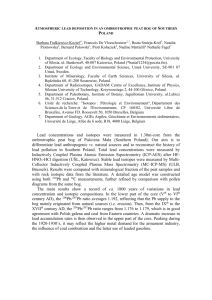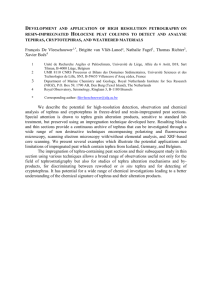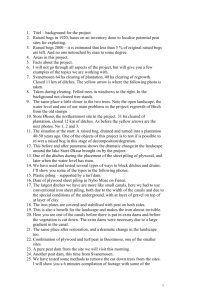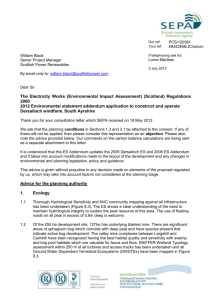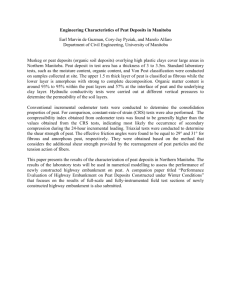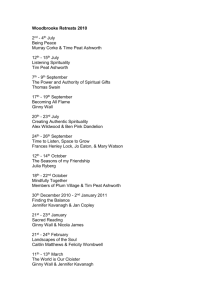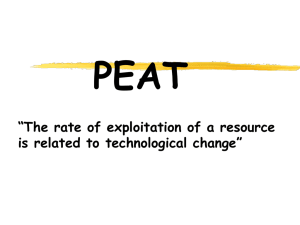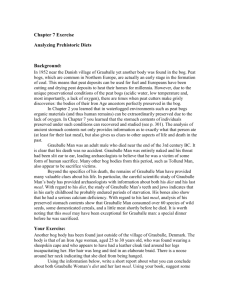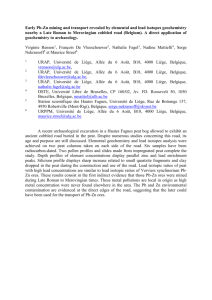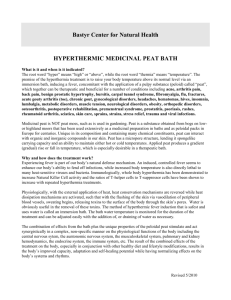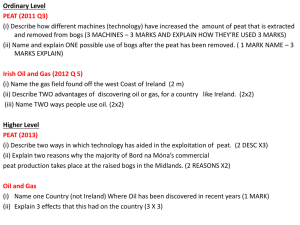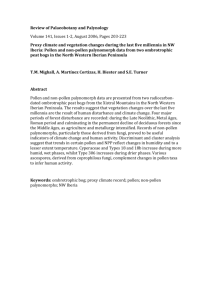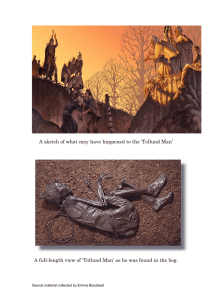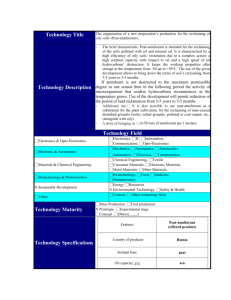Two millennia of atmospheric lead and heavy metal pollution
advertisement
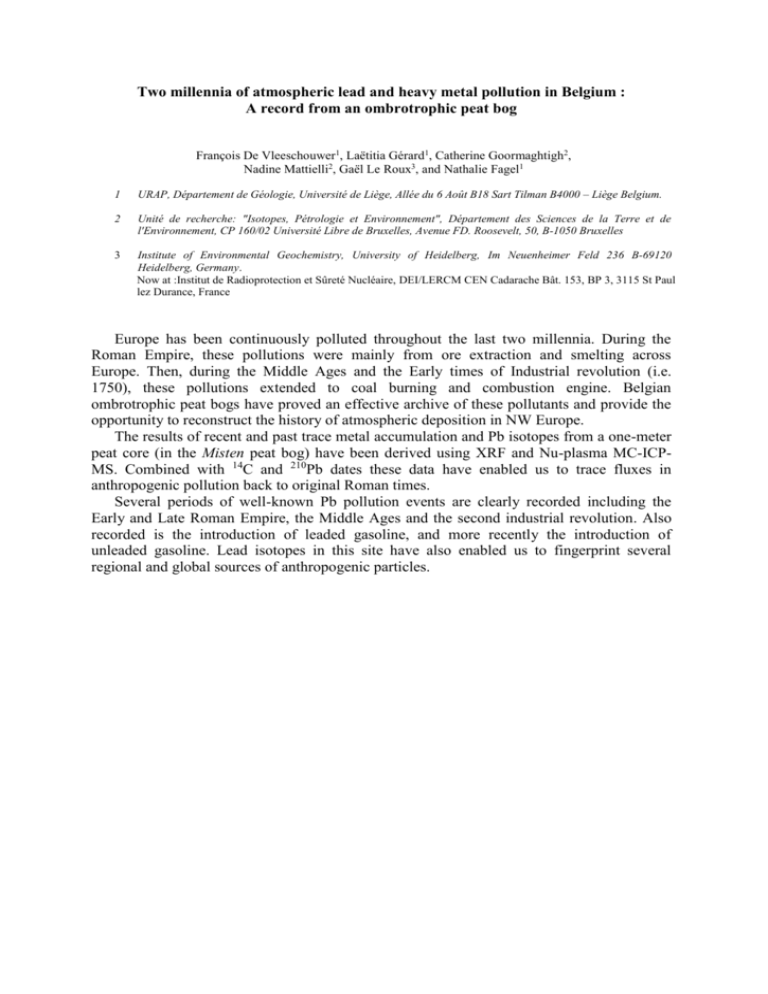
Two millennia of atmospheric lead and heavy metal pollution in Belgium : A record from an ombrotrophic peat bog François De Vleeschouwer1, Laëtitia Gérard1, Catherine Goormaghtigh2, Nadine Mattielli2, Gaël Le Roux3, and Nathalie Fagel1 1 URAP, Département de Géologie, Université de Liège, Allée du 6 Août B18 Sart Tilman B4000 – Liège Belgium. 2 Unité de recherche: "Isotopes, Pétrologie et Environnement", Département des Sciences de la Terre et de l'Environnement, CP 160/02 Université Libre de Bruxelles, Avenue FD. Roosevelt, 50, B-1050 Bruxelles 3 Institute of Environmental Geochemistry, University of Heidelberg, Im Neuenheimer Feld 236 B-69120 Heidelberg, Germany. Now at :Institut de Radioprotection et Sûreté Nucléaire, DEI/LERCM CEN Cadarache Bât. 153, BP 3, 3115 St Paul lez Durance, France Europe has been continuously polluted throughout the last two millennia. During the Roman Empire, these pollutions were mainly from ore extraction and smelting across Europe. Then, during the Middle Ages and the Early times of Industrial revolution (i.e. 1750), these pollutions extended to coal burning and combustion engine. Belgian ombrotrophic peat bogs have proved an effective archive of these pollutants and provide the opportunity to reconstruct the history of atmospheric deposition in NW Europe. The results of recent and past trace metal accumulation and Pb isotopes from a one-meter peat core (in the Misten peat bog) have been derived using XRF and Nu-plasma MC-ICPMS. Combined with 14C and 210Pb dates these data have enabled us to trace fluxes in anthropogenic pollution back to original Roman times. Several periods of well-known Pb pollution events are clearly recorded including the Early and Late Roman Empire, the Middle Ages and the second industrial revolution. Also recorded is the introduction of leaded gasoline, and more recently the introduction of unleaded gasoline. Lead isotopes in this site have also enabled us to fingerprint several regional and global sources of anthropogenic particles.

